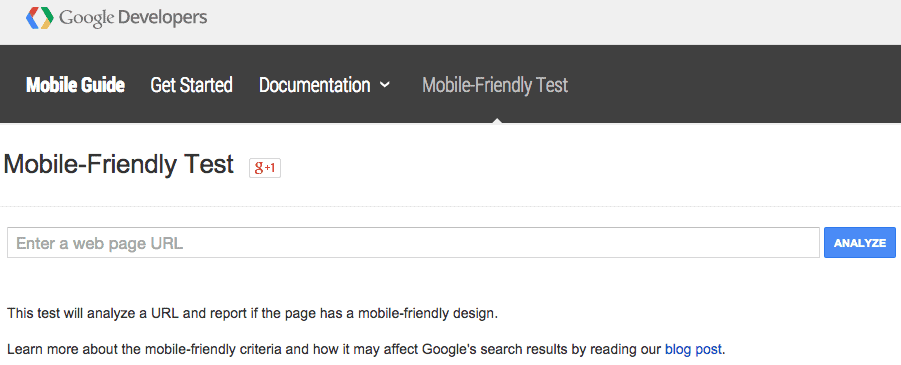Many law firms and others will doubtless get caught by Google’s latest updates, coming on April 21. But there are some quick checks you should make now to avoid the penalty.
The updates, the largest since the Panda update, will be much more mobile-focused and penalize sites that fail to make themselves readily usable on mobile devices.
What can you do?
Here are some key steps you should take to ensure your site is mobile optimized and to avoid being penalized by the Google update.
Step #1: Take the Google Mobile-Friendly Test.
Check on the Google Mobile Tester. If the website you entered passes Google’s test, you will see a green banner indicating the site is mobile-friendly.
If your website does not pass, Google will let you know the page is not mobile-friendly andalso provide the appropriate explanation, which might include some of the following:
Content is wider than the screen: This requires users to scroll side-to-side to read the page.
Text too small: This means the user must zoom to read text on the page.
Links too close together: On a smartphone, links should be easy to tap with your fingers — this means that the links should be big enough and in natural location to tap.
The mobile viewport isn’t set: This is a little more on the technical side of things, but the mobile viewport controls the width of the page for the device. If your website displays a desktop lan
Step #2: Make your website receptive
It’s typically not the very best idea to create a separate web site just for mobile visitors. Since updates to your main website will not show up on your mobile site, the primary factor you will certainly desire to prevent this approach is
A receptive design will immediately adjust your site to the size of a person’s screen, including all smart phones.
Step #3: Speed.
Although there are 4G mobile networks, the Web link on your smartphones will never be as quick as a cable television connection– at least not for the following year or 2.
Considering that 4G signals typically aren’t everywhere, some people might be filling your site over a 3G link.
For this reason, you require your site to load quickly. Remember your entire site should change its size and layout, based on the device utilized to access the site.
Just how do you speed up your website? I could point you to a lot of sources similar to this one, however I suggest that you first start with Google PageSpeed. It’s Google’s own service that aids make sites faster.
Check out this infographic that cracks down exactly how slow-moving site speed influences Google’s positions if you do not believe that site rate is essential. If you’re still not convinced, you can read a study I wrote years ago on how I increased my traffic by tidying up my code and speeding up my website.
Here are some tips for improving website rate:
Content distribution network– your web host must have this attribute. Call them to obtain it made it possible for. It puts your site on servers all over the world so that your site loads faster.
Fast server– pick a good hosting provider like RackSpace or WPengine. When it comes to website rate, this makes the globe of distinction.
Tidy up your code– hiring a great designer is well worth it as it will make your code cleaner. Messy code generally indicates a slower site.
Step #4: Check Webmaster Tools
Log into Google Web designer Equipments and also choose your website profile (or add a profile for your website if you have not currently)once you make the adjustments.
As soon as you do that, click “Creep” in the sidebar, then click “Retrieve as Google.”.
Your LINK should already be there, but you can also enter subdirectories.
Before you click “fetch and render,” choose the drop-down food selection that claims “Desktop computer,” and pick the pertinent mobile choice (if you are unclear, you could choose all of them– one by one).
[table id=10 /]







